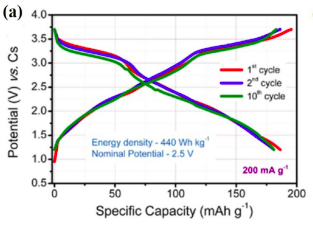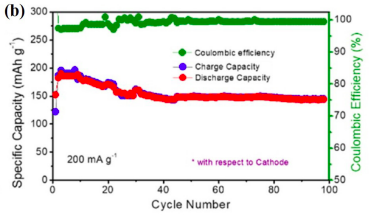


Na-ion batteries are quickly emerging to be a complementary solution to fulfill the energy storage demands for the current scenario. Due to the high availability of sodium ion resources, inexpensiveness, excellent electrochemical features, Na-ion batteries are a propitious candidate for energy storage devices. The battery research team at NCPRE has been able to demonstrate a Na-ion full cell with doped ammonium vanadium oxide (NVO) cathode against hydrogenated sodium titanium oxide (NTO). The cell is capable of retaining 94% capacity after 400 cycles, has a high energy density of 467 Wh/kg at a very high rate of 0.2 A/g, a record over FARADION cells.


Various other chemistries such as novel layered transition metal oxide, sodium vanadium fluorophosphate cathode along with hard carbon anode are also being developed in order to achieve a high volumetric density cell for stationary storage application. Recently, the energy storage group at NCPRE has reported, for the first time an extremely high energy density (770 Wh kg−1) and excellent electrochemical performance cathode. These findings can pave a way to produce a high-performance rechargeable sodium-ion battery full-cell using alternative cathode and anode with a comparable energy density of current lithium-ion technology. The team has also been working on scaling up of the tried and tested chemistries to the pouch and cylindrical cells with 2.5 Ah capacity in order to bridge the gap between research and commercial productivity.
